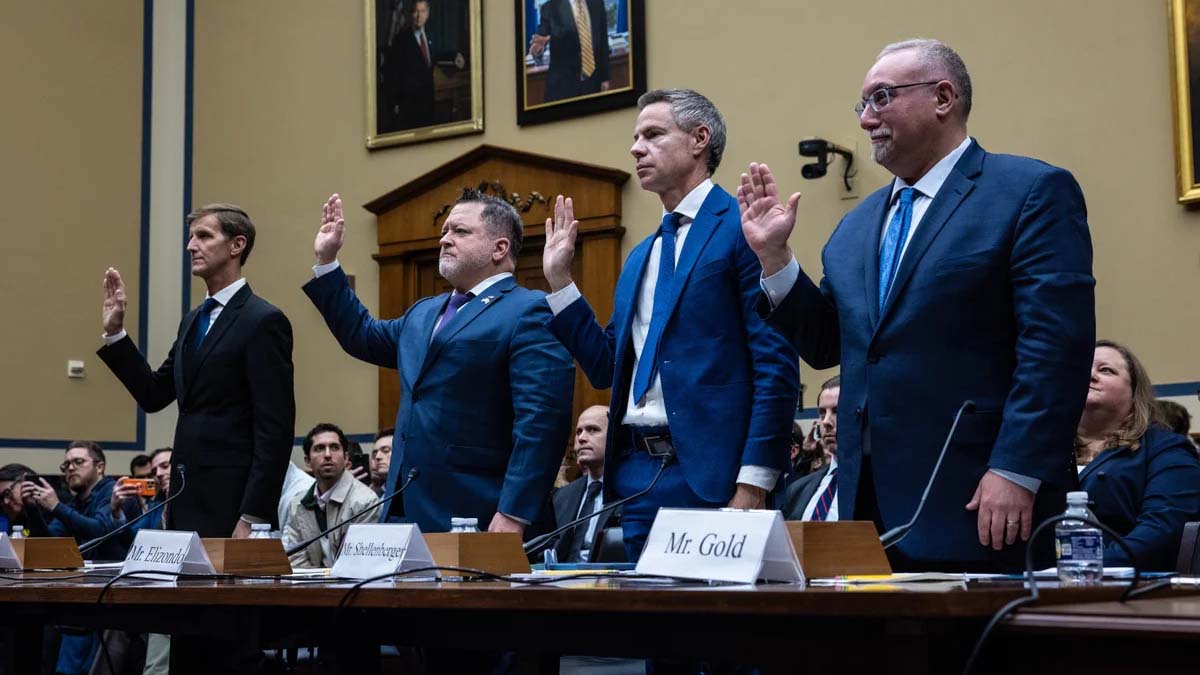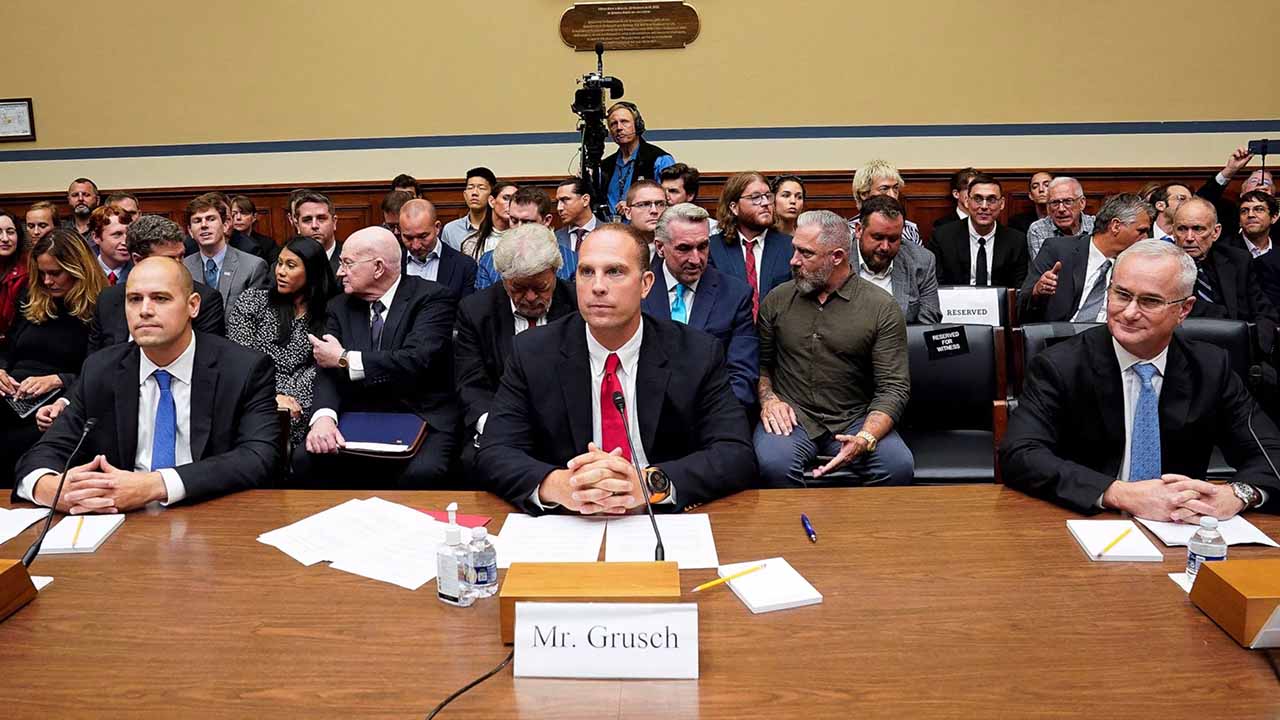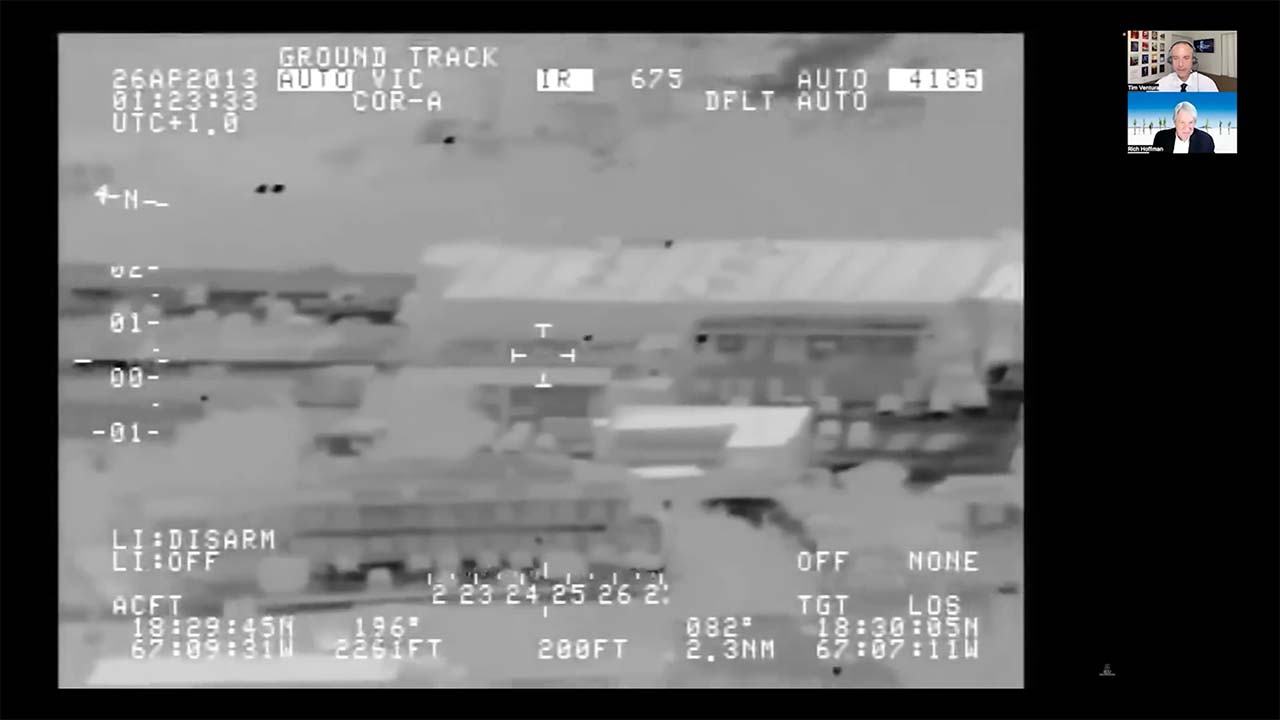The Pentagon’s UAP Task Force
Franc Milburn, former intelligence officer, strategic risk analyst, and author of “The Pentagon’s UAP Task Force”, discusses the US Government’s AATIP and UAPTF investigations and the potential risk & threat posed by Unidentified Aerial Phenomenon (UAP). Milburn details his extensive background and the challenges of bringing UAP research into mainstream academia, and the task of publishing his paper through the Begin-Sadat Center. The discussion covers the AATIP and UAPTF investigations, the surprising level of existing research on weaponizing UAP technology (including Eric Davis’s work and 38 Defense Intelligence Research documents), and the division within the military and intelligence communities regarding UAPs.
The conversation explores various UAP-related incidents, including the Nimitz encounter, the potential for off-world origins, and the associated health risks (radiation exposure, etc.). Milburn highlights the inconsistencies in government responses, the lack of progress despite decades of investigation, and the potential threat UAPs pose to national security. He concludes by predicting that the upcoming DNI report will be heavily redacted, with crucial details relegated to a classified version, and that future progress hinges on political will and resource allocation.
From Military Intelligence to UAP Research:
Milburn’s career spans military intelligence, counterintelligence, international relations, and risk assessment for a diverse clientele, including Fortune 500 companies and government agencies. His shift towards UAP research, beginning in 2017, stemmed from a confluence of his professional experience and a renewed interest in the subject. His initial attempt to publish a paper on UAPs with the Naval Postgraduate School was unsuccessful due to the topic’s sensitivity, highlighting the challenges researchers face in navigating this field. His subsequent success with the Begin-Sadat Center represents a crucial step towards bringing UAP study into the mainstream academic sphere, echoing the work of researchers like Richard Dolan who have explored the parallel between UAPs and occult history.
The Scope of the Research and Key Findings:
Milburn’s paper encompasses a broad range of data, including information from the Advanced Aerospace Threat Identification Program (AATIP) and the Unidentified Aerial Phenomena Task Force (UAPTF), but also extends beyond these official sources to incorporate a wider body of UFO-related data. His research led him to question whether a single phenomenon or multiple phenomena are at play, influenced by his investigation into Skinwalker Ranch and conversations with renowned researcher John Alexander.
The paper highlights the surprising level of serious academic interest in UAPs from prominent figures such as Michael Masters and Paul Hill, as well as the internal disagreements among physicists regarding the physics of UAP propulsion. Despite these scientific disagreements, there was a consensus among experts like Dr. Jack Sarfatti and Eric Davis that UAPs could pose a significant threat.
Weaponization of UAP Technology and Military Implications:
A particularly striking aspect of Milburn’s research is the surprising level of thought already dedicated to the potential weaponization of UAP technology. He cites 38 Defense Intelligence Research documents projecting technology to 2050, Eric Davis’s work, and the limitations of the Nimitz encounter (due to the F-18s being unarmed) as evidence of this concern. Milburn emphasizes the critical need for the military to plan for potential future threats from advanced UAP technology, referencing Davis’s email to Jack Sarfatti regarding the Advanced Aerospace Weapons Systems Applications Program (ORSA). This program, while not tasked with explaining the propulsion of the “Tic Tac” UAP, was designed to extrapolate engineering physics to 2050 to assess whether American capabilities could match observed UAP characteristics. Crucially, Davis highlighted that in a scenario where Tic Tac UAPs become a threat, the 38 reports allowed for speculation due to the lack of empirical data; a definitive explanation requires examining a craft.
The Significance of Recent Navy Sightings and Historical Context:
Milburn underscores the importance of Navy UAP sightings since 2004, emphasizing the verifiable data, credible witnesses, open-source analysis, and official DoD statements that make these cases more accessible to researchers and lawmakers. He notes that social media and media interest have significantly fueled the accessibility of this information. However, he cautions against letting the focus on post-2004 sightings overshadow compelling historical cases, citing the 1976 Tehran incident and a DIA report that reached the White House as examples of the long history of UAP encounters.
The Question of Origin and Intent:
A central theme throughout the podcast is the question of UAP origin and intent. While Milburn acknowledges the use of the term “off-world” by Eric Davis (a DoD advisor to the Nimitz and Roosevelt investigators), he highlights the multiple interpretations this term allows. He explores various possibilities, including extraterrestrial, interdimensional, and even temporal origins, referencing the insights of John Alexander, who suggests that the origin of UAPs could be “yes and unknown” in terms of spatial, temporal, or dimensional aspects. Milburn emphasizes that multiple explanations are possible, and that a consciousness component may exist alongside physical interactions.
The issue of UAP intent is equally complex. Milburn highlights the potential for both benevolent and malevolent interactions, citing examples of both positive and negative encounters. He stresses that the lack of communication with UAPs makes it impossible to definitively assess their intentions. However, he notes that UAPs have demonstrated a clear interest in nuclear and military capabilities, making them a potential threat. The unpredictable high-G maneuvers and rapid acceleration observed during encounters, such as the one described by Commander David Fravor’s wingman, further underscore this potential threat.
Threats, Medical Effects, and Credibility of Related Phenomena:
The podcast also addresses the potential threats posed by UAPs, including direct threats to strategic assets and indirect threats through actions like radar jamming and interference with nuclear systems. Milburn discusses the catalog of medical problems reported in humans near UAPs, potentially due to radiation exposure, citing research from Paul Hill, Kit Green, and Condyne. He also addresses the credibility of phenomena like cattle mutilation and abductions, acknowledging the existence of numerous credible cases and highlighting the potential threat to humans. He differentiates between “abductees” (experiencing malign encounters) and “experiencers” (experiencing benign encounters), emphasizing his personal view of abduction as a hostile act.
The Path Forward: Data Fusion, Defense, and Political Will:
Milburn concludes by emphasizing the need for better data fusion across agencies, the development of tools to identify and track UAPs, and the development of defenses against them. He acknowledges the challenges posed by competing interests and the need for political will to allocate the necessary resources for such a massive undertaking. He highlights that while the upcoming DNI’s 180-day UAP report will likely omit crucial details due to national security concerns, the open-source data already available strongly suggests that UAPs are not human-made and pose a significant threat requiring a comprehensive mitigation strategy.
In conclusion, Milburn’s analysis provides a compelling and nuanced perspective on the UAP phenomenon, highlighting the need for a serious, multidisciplinary approach to understanding and addressing this complex issue. His work serves as a crucial contribution to the ongoing conversation, urging a shift from speculation to rigorous investigation and informed policy-making.
Register For UFORev
Want to see more great UFO Reverse Engineering stories? Sign up for our mailing list to get exclusive access to captivating presentations, engaging events, and more!
RECENT POSTS
Congressional UFO Hearing with Lue Elizondo
May 4, 2025
Congressional UFO Hearing with David Grusch
May 3, 2025
The Long History of UFO Crash Retrieval
May 2, 2025
Aguadilla UAP Sighting Analysis
May 2, 2025





